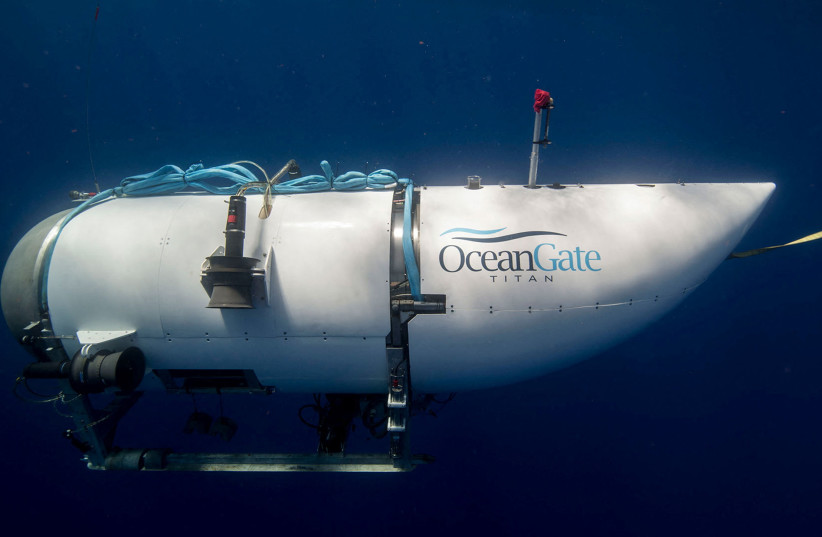I feel compelled to comment on the sinking and loss of the Titan manned submersible and its passengers. It is indeed a tragic event, but one that likely could have been avoided.
It is a travesty that the vehicle was never certified for use by any of the international certification/classification societies such as DNV-GL or the American Bureau of Shipping.
Of course, I personally do not know what level of structural analysis, testing, and periodic inspection was performed on Titan. It is unlikely that they did costly full-scale cyclic testing of the pressure hull to assess possible structural degradation. In my opinion, it is likely that failure occurred at either bolt-hole regions or by buckling in a weakened area in the composite pressure hull resulting in catastrophic implosion of the pressure hull.
It is important to note that virtually all manned submersible pressure hulls are fabricated using either high-strength steels or titanium, based on safety concerns and solid experience.
In addition, designing a manned submersible in a tubular configuration is asking for trouble. The structure doesn’t resist the hydrostatic pressure at depth as efficiently as a sphere which virtually all manned deep diving vessels employ.

Furthermore, the use of carbon composites on the Titan vehicle is full of unknowns. First, there are no standard defect criteria for the composite material – and non-destructive inspection methods are not well established. Also, the coupling of the graphite composite hull to titanium end caps causes a structural loading mismatch at the bolt holes and titanium and composites expand and contract differently with temperature changes.
In addition, out-of-roundness issues with the graphite composite pressure hull could lead to local buckling concerns at the very high hydrostatic pressures in deep ocean operations.
Marine Technology Society's concerns about the Titan's development
In 2018, the Marine Technology Society drafted a letter to Oceangate (never sent) expressing concern about the development of Titan and stating that “Our apprehension is that the current experimental approach adopted by Oceangate could result in negative outcomes (from minor to catastrophic)” and “We recommend that at a minimum you institute a prototype testing program that is reviewed and witnessed by DNV-GL or ABS.”
A major concern based on the Titan tragedy is that manned submersible safety may come under question. This should not be the case. Properly classed/certified manned submersibles have shown to have a wonderful safety record.
For example, in 2005, I was hired as a materials technology consultant by Southwest Research Institute and Wood Hole Oceanographic Institution to work on an Upgrade Project for the manned deep submersible vehicle Alvin.
The successful development of the original Alvin goes back to 1964 with a history of more than 5,000 dives and more than 30,000 hours of operation. Of note, on March 17, 1966, Alvin was used to locate and recover a submerged 1.5-megaton hydrogen bomb lost in the Mediterranean in a US Air Force midair accident.
The goal was to replace Alvin’s 2.134-meter diameter steel pressure hull with 7.60-centimeter-thick titanium that would allow the vehicle to increase its depth of operation from 3,658 m. to 6400.8 m. and would enable it to cover 98% of the ocean floor.
I was intimately involved in the selection and testing of the titanium alloy that was used and its fabrication by industry that included electron beam welding of two hemispheres together resulting in the final pressure hull that can host three oceanographers.
My main point is that in order to certify the pressure hull by ABS, comprehensive structural and bucking finite element analysis was performed by SwRI. Testing was performed on the titanium alloy under various loading conditions – static (creep), cyclic (fatigue), and seawater (stress corrosion). The fabricated titanium pressure hull was precisely machined to ensure sphericity – any out-of-roundness areas would be local areas of concern from a buckling perspective under the hydrostatic pressure at such deep depths.
The final personnel sphere was then cyclic-tested at simulated full depth at the unique pressure tank located at the David Taylor facility in Annapolis MD. The vehicle was then successfully inspected using a variety of non-destructive techniques and finally certified for use by ABS in 2013.
The writer is a former senior project engineer for the US Navy and past head of the Titanium Technology Program Office. Before his recent retirement, he was president of GIA Associates, an engineering consulting firm, and president and director of the not-for-profit Maritime Technology Alliance.
